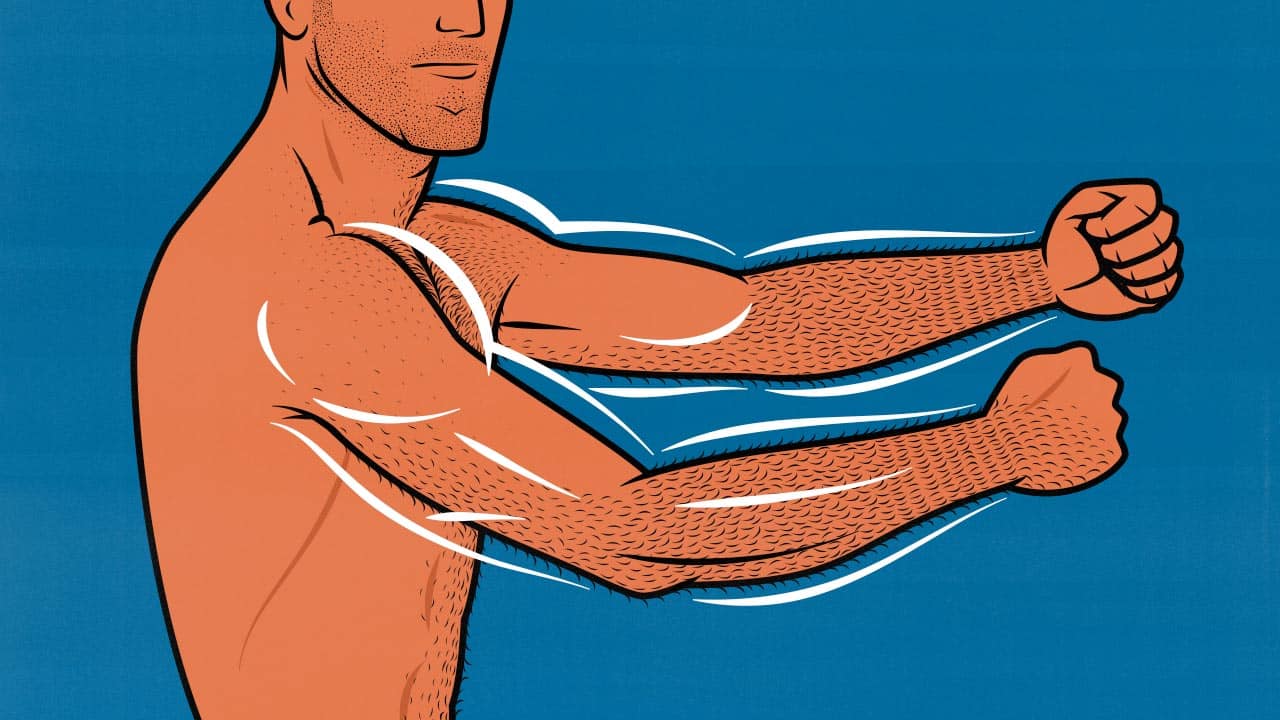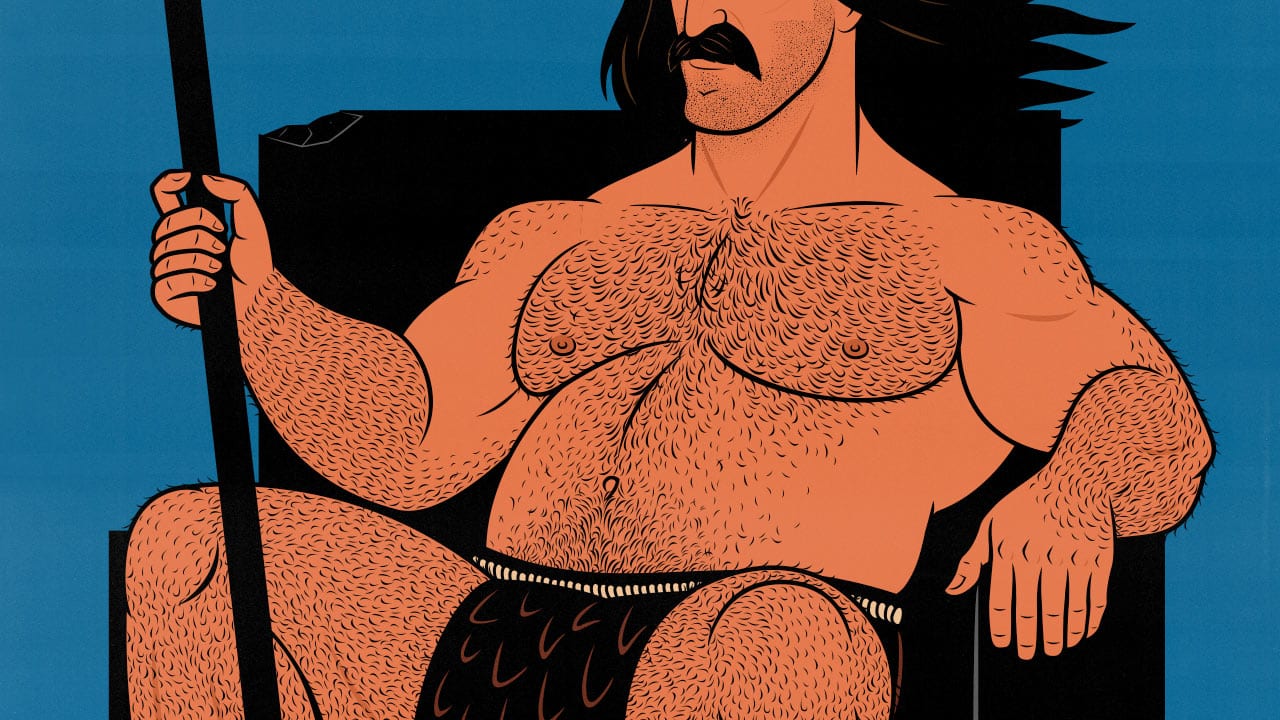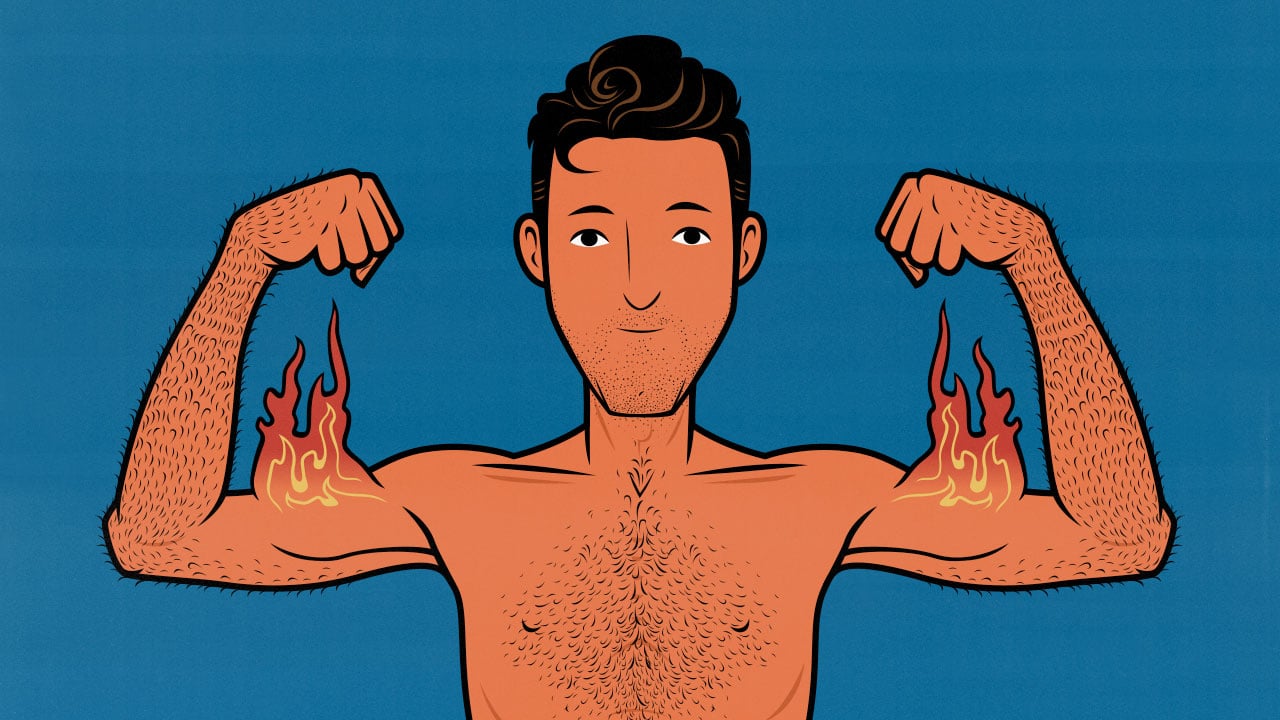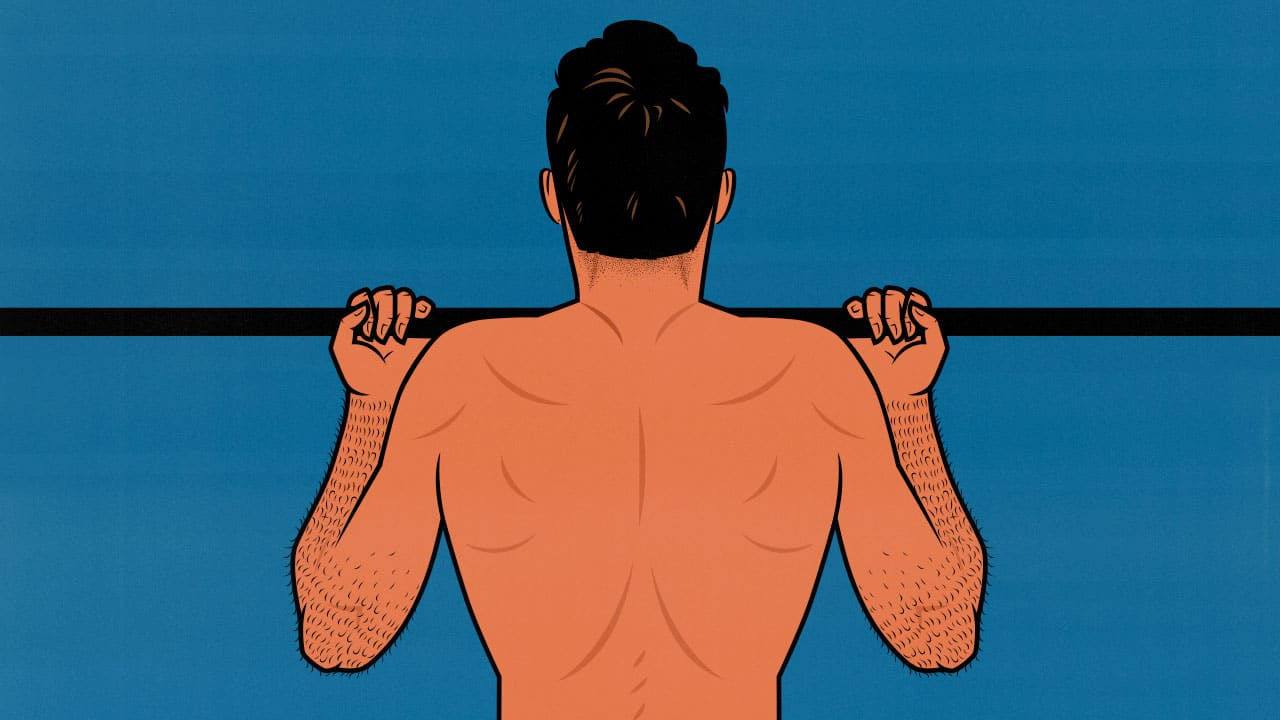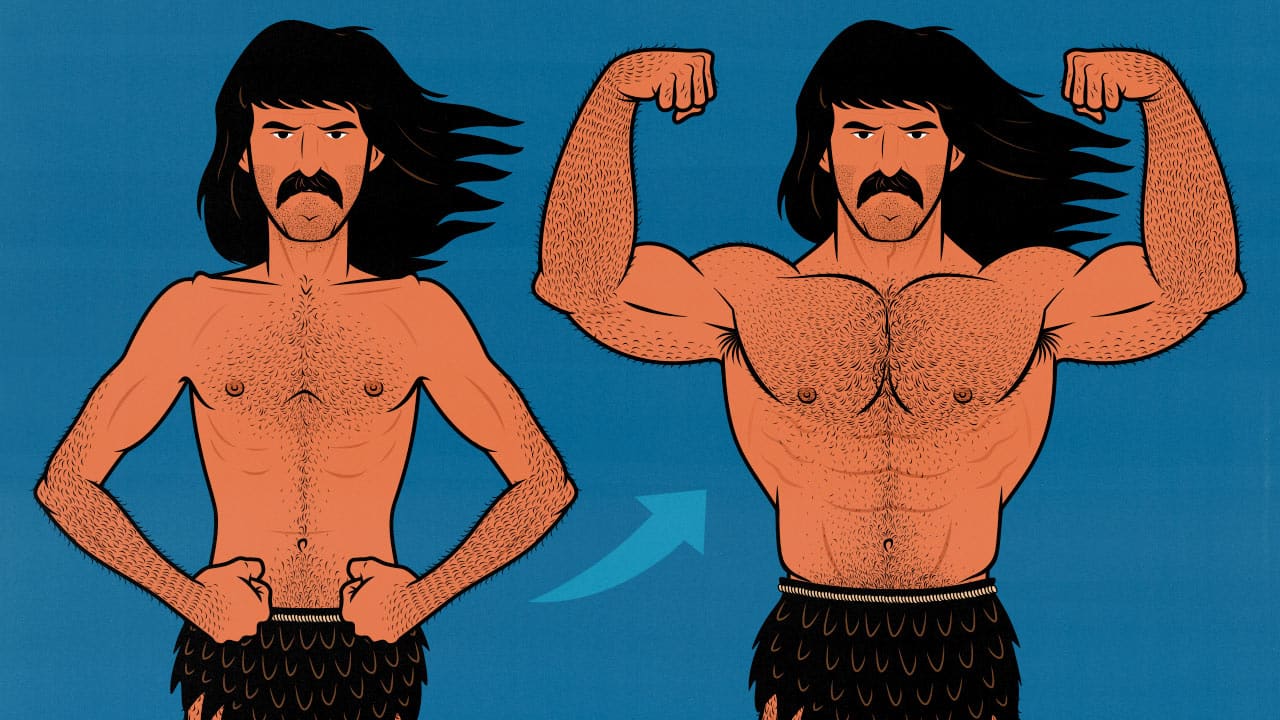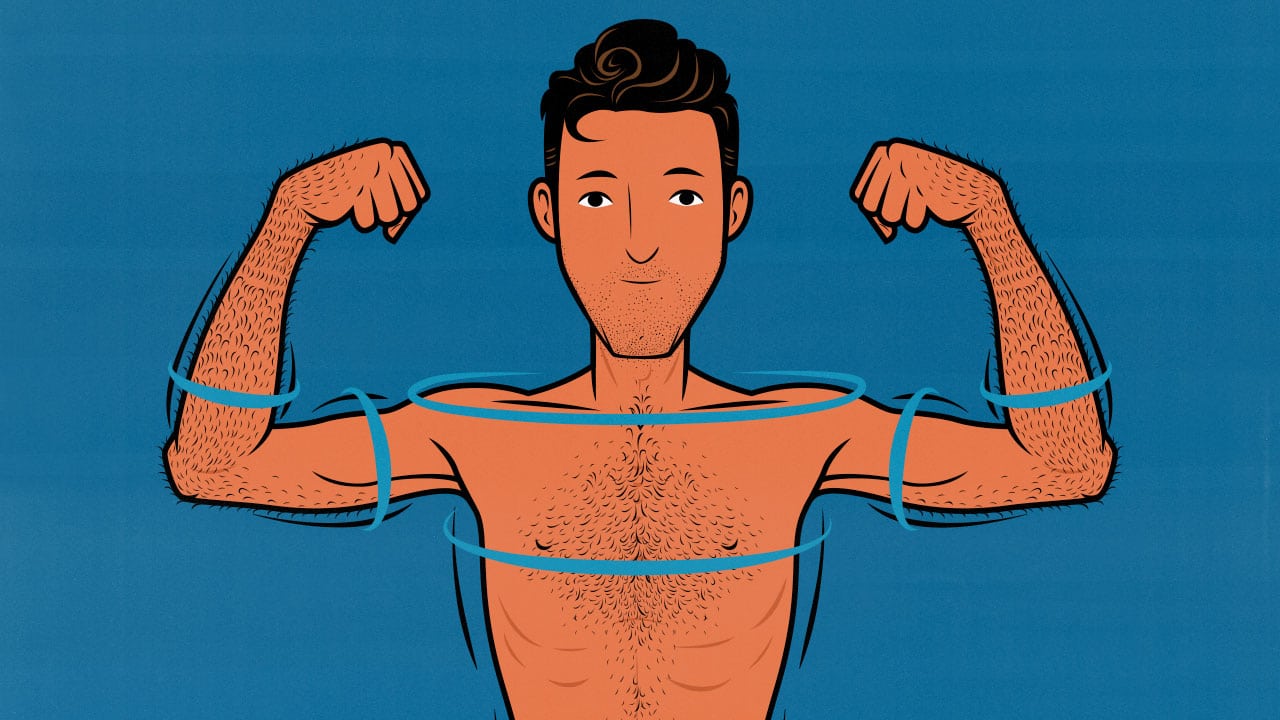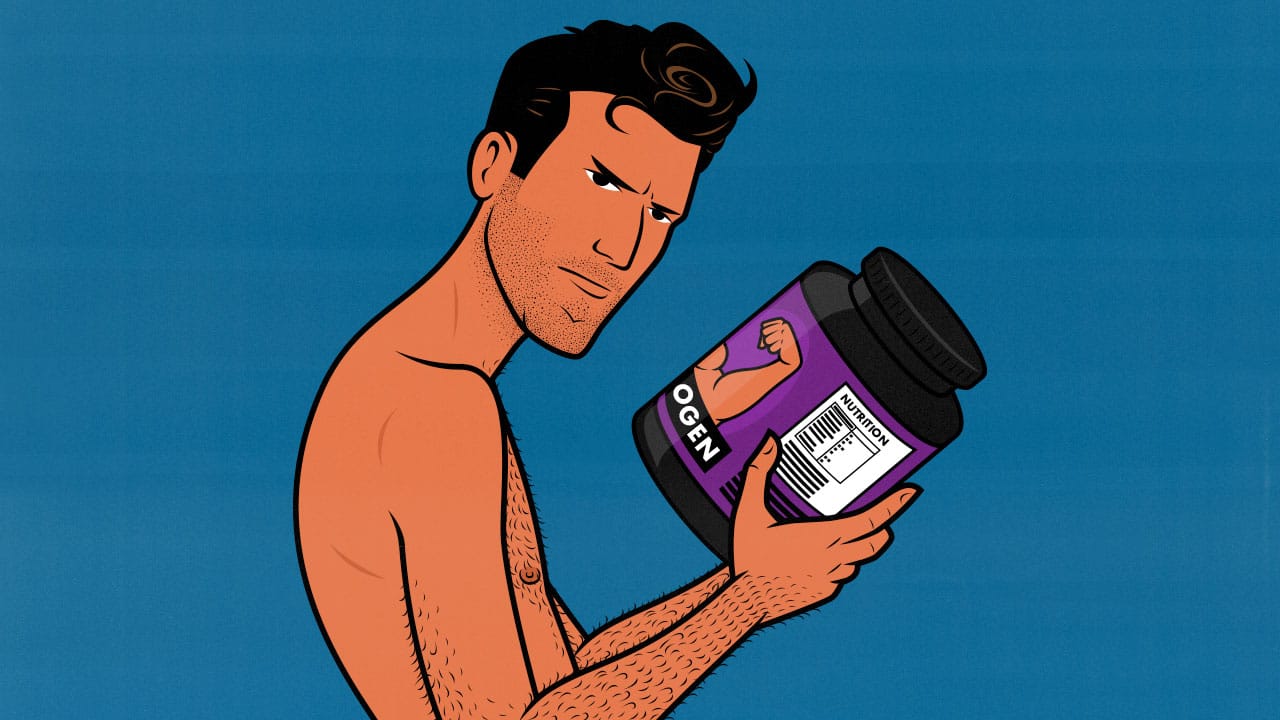Posts by Shane Duquette
Before & After Creatine: How Much Extra Muscle Will You Gain?
Creatine helps you build muscle, sure, but how much? Creatine has thousands of studies proving its effectiveness, and every expert recommends it, but most people don’t know how whether it will help them build 5% or 50% more muscle.
One way to get an idea of how well it works is to look at before-and-after photos of guys combining weight training, a good bulking diet, and creatine supplementation. But that won’t tell you exactly how effective creatine is. That’s why we need to look at the research.
There are two big meta-analyses looking at how creatine affects muscle growth. The first tells us how much extra lean mass we can expect to gain. The second tells us how much extra muscle mass we can expect.
We don’t sell supplements. There are no affiliate links in this article.
Read MoreHow to Build Bigger Arms
I’ve managed to bring my arms from 10 inches up to 16 inches. But I got off to a rough start. During my first two years of successful bulking, I gained 40 pounds at 11% body fat, bringing my bench from 65 to 225 pounds and doing chin-ups with 50 pounds around my waist. Yet, despite my progress, I had only added 2 inches to my arms. My arms were still 1.3 inches smaller than average, and the average man doesn’t even exercise!
That’s when I realized my mistake. I was relying on compound lifts to bulk up my arms. When I finally added proper arm exercises to my workout program, my arms quickly shot up to 14 inches, then gradually climbed to 16 inches. Surprisingly, my bench press started going up again. I was finally able to bench 315.
We’ve used these same methods with over 10,000 skinny clients and millions of readers. If you add these methods to your workout routine, you can expect to add around 2 inches to your arms within the next 6 months. That’s what our clients gain, on average.
Read MoreHow Fast Can You Build Muscle Naturally?
You may have heard that natural lifters can gain 20 pounds of muscle in their first year, 10 in their second, 5 in their third, and then a few pounds per year until they reach their natural potential. That doesn’t seem to be true for the average man, and you may not be average anyway.
How fast can you build muscle naturally? That depends. Let’s take a deeper look.
Delve DeeperA Beginner’s Guide to Bulking & Cutting
Bulking and cutting are key terms in the muscle-building industry. Bulking is when you gain weight to facilitate muscle growth. Cutting is when you lose weight to burn fat. Some people do them in sequence, bulking, then cutting, and then bulking again.
Bulking is controversial, and understandably so. The average person is already overweight. They don’t need to gain even more weight. However, if you’re skinny, thin, lean, or in good shape, bulking is by far the most effective way to gain muscle and strength.
Cutting is less controversial. Most people have extra fat, and cutting is the best way to burn it. It’s a great first step for the average beginner. However, many seasoned lifters get distracted by trying to maintain overly lean body-fat percentages.
The main concern is that you could get stuck in an endless cycle of bulking and cutting seasons, bulking until you become overweight, cutting until you wither away, and then going back to bulking. This is especially worrisome for “skinny-fat” people who already feel too thin and fat.
We have solutions for all these issues.
Read MoreDo Skinny People Have Faster Metabolisms? Yes, Sometimes
There’s a common myth in the fitness industry that skinny people don’t have faster metabolisms, they just don’t eat as much food. According to this line of thinking, there’s no such thing as a fast or slow metabolism. Rather, your metabolism is determined by your height, age, weight, lean mass, exercise habits, and activity levels. There are two problems with this line of thinking.
First, those variables can result in huge changes in metabolic rate. For example, in a study published by Science, they found that a 180-pound person could burn anywhere from 1,400 to 5,700 calories per day (study).
Second, even if you account for every single one of those variables, metabolisms can still vary greatly between people. Even when living totally average lifestyles, naturally skinny people often have unusually fast metabolisms.
Let’s go over the research and implications. Then we can talk about how to gain weight and build muscle with a fast metabolism.
Read MoreHow to Clean Bulk: The Nutritious Way of Building Muscle
Clean bulking is when you approach bulking with a monk’s asceticism, eating only the purest foods and carefully avoiding culinary hedonism. It may sound like I’m poking fun. That’s true. But there’s also truth to be found in clean bulking. There are no shades of grey. No nuance. This is often presented as a negative, but it also makes the diet simpler to learn and easier to follow.
Clearer boundaries are easier to stay within. Instead of trying to limit your junk food, you avoid it entirely. Foods like pasta and bread are neither whole nor wholly processed. These are grey foods. They have no place in a clean diet. There’s a simplicity here. Eat this, not that. It works.
Perhaps most importantly, clean bulking diets are nutritious. They aren’t necessarily more nutritious than balanced bulking diets, but eating clean is certainly a healthy way of eating. If it works for you, there’s plenty of upside with very little downside.
Delve DeeperCalisthenics Vs Weights: Which Builds More Muscle?
Both calisthenics and weight training can stimulate muscle growth. That’s not answering your question, though. Resistance bands, bodybuilding, and powerlifting all stimulate muscle growth. So can cardio. So can flexing your muscles (study).
We’ve helped thousands of people bulk up over the past decade, some using weights, others with pure calisthenics. We’ve seen how their results compare. There’s also research comparing the results people get with calisthenics vs weight training. We can take that into consideration, too.
We don’t have a bias. We don’t sell weights or gymnastic rings. Our brand isn’t built on one approach or the other. We’ve trained both ways. We’re happy to use and recommend whatever gives the best results.
Dive InWhat Is Dirty Bulking? Are the Results Worth It?
There are countless weapons lifters wield against the skeletal armies of atrophy. One such weapon is the “dirty bulk.” It disregards standard nutritional recommendations, using whatever means necessary to get into a calorie surplus. Usually, that means eating plenty of junk food.
We’ve dirty bulked in the past. We’ve had clients do it, too. Most were everyday people, but some were college, professional, and Olympic athletes. You’d be surprised at what they eat to get into calorie surpluses.
Dirty bulking can be good for building muscle. It won’t necessarily make you fat, either. Some dirty bulkers gain muscle more leanly than some clean bulkers. The Devil is in the details, and we’ll delve into all of those details.
Delve DeeperDoes Flexing Build Muscle? Yes, But It’s Not What You Think
I came across this fascinating story about Charles Atlas years ago when I was writing an article about training for muscle size. If you don’t know, we’re a muscle-building site for skinny guys, and Charles Atlas was the first person to mass-market a workout program specifically designed to help skinny guys bulk up.
His story is much more interesting than I expected. First of all, it’s a flexing program. You buy the guide, and then you do a flexing routine at home. The “dynamic resistance” from flexing is supposed to stimulate muscle growth. There’s nothing wrong with that idea in theory, but does it actually work?
There have been studies measuring muscle growth from flexing, too. We can look at the results of a recent one.
Read MoreDoes Collagen Help Build Muscle? A Quick Research Overview
Collagen is a popular “anti-aging” supplement for maintaining skin elasticity, keeping our joints strong, and helping our connective tissues recover. So far, the research has shown that collagen does indeed offer all of those benefits, in a small way—probably (study, study).
Lifters often run into nagging aches and pains in their joints and tendons. Supplementing with collagen seems like a reasonable way to improve recovery. That raises an obvious question: what about muscle growth? Does collagen help build muscle?
Jacinto and colleagues tried to answer that question by comparing whey protein against collagen protein, then seeing which yielded more muscle growth. It’s a neat study. Let’s delve into it.
Delve Deeper

